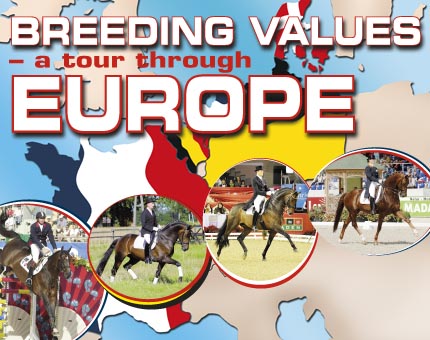
There has been no breeding district in Europe where the issue of BLUP (Best Linear Unbiased Predictor) and breeding values has aroused more heated controversy than France, the first country to use the formula for horse breeding. In that most bureaucratized of nations, where every aspect of the breeding process was subject to a myriad of regulations, the system of BLUP ratings was introduced in 1988. BLUP is a mathematical model that has been used to predict everything from the frequency of volcano eruptions to the growth rates of chickens. In the case of the French horse, the BLUP is calculated from the ISOs (that’s performance results) of relatives, the sire and dam (if and when they compete) and of their progeny; a foal is then born with a BLUP rating based the performances of his forebears and his siblings.
One of the most outspoken critics of the BLUP has been the French equestrian journalist, and breeder, Bernard le Courtois. Writing in the 1994 edition of Monneron, some six years after the introduction of the mathematical model, he had this to say:
“In the beginning I was optimistic concerning the BLUP; even though I have always been convinced that nothing can replace experience and observation and the know-how of a horseman. Today, with hindsight, I am aware of the system’s aberrations as well as the way in which it has been abused.”
Le Courtois asserts that his judgment “is drawn from professional experience: as a stud farmer, owner, judge, dealer and most of all as a breeder passionately involved in sport horse selection.” He is also well aware that the pressure for some sort of ‘objective’ guide comes in part from the phasing out of the traditional breeders and the rise of a new generation of ‘town’ breeders. This is compounded by a National Stud staffed by “executives who do not have the practical training their predecessors received, thanks to present modes of recruitment and training.”
“Many newcomers in the horse world grabbed onto BLUP like a childishly simple life-buoy. Suddenly they felt on an equal par with the professionals, imagining that this index would make up for their lack of knowledge, without realising that they were fooling themselves. They hid behind the BLUP, believing it would protect them.”
He turns to the evidence of the scientist, Professor Signoret: “The principle of the BLUP method is excessively simple, even simplistic. It affirms a priori that a foal that is born will, providing all else is equal, represent an average between his father and mother. Breeders, genetic specialists, and those involved in improving domestic breeds know that, generally speaking, this is not the case. Only milk production is the happy exception confirmed by experience.” It turns out that the equine BLUP index is nothing more than an adaptation of the American milk BLUP index!
It seems that Bernard has had his way, since now the BLUP rankings have almost entirely disappeared, and it is hard to obtain them from any of the various French official sources.
Indeed Arnaud Evain, another brilliant commentator on the French breeding scene, is of the opinion that currently the pendulum has swung too far in the other direction. He feels that while in the past, the BLUP figures were over-used particularly in stallion selection, that now they are not being used as they could be – not as a means of selecting stallions, but as a way of improving the mare band.
“If the BLUP is not a good predictor of the individual quality of a particular sport horse, it is a very reliable predictor for the average quality of the production of a large group of males or females: for example, if you use the same stallion on a group of 30 mares with a BLUP of 15 and on a group of 30 mares with a BLUP of 20 and breed and train both groups under the same conditions you can expect with over 95% precision that the average jumping index of the second group will be 5 points higher than the first group!”
“The BLUP is a wonderful instrument to improve the genetic level of a large group and a very tricky one to make individual predictions.”
There are two components on any breeding values table: the breeding value itself, and the accuracy of the estimation of the breeding value. As the stallion has more and more progeny out competing or being evaluated in mare tests and the like, the reliability of the prediction of the breeding value increases. For example, the French jumping stallion with the highest breeding value, Nectar des Forets (Diamant de Semilly out of Junte des Forets, who is by Super de Bourrieve, a son of Laudanum xx, out of a Uriel / Ibrahim mare) with a value of +35, only has a reliability of 0.70 – which is not surprising since the stallion was born in 2001 and has very few progeny on the ground. Indeed the horse does not appear at all on the list of the 96 most used French stallions in the 2009 season, which means he bred less than 37 mares, the cut-off point for inclusion in the table.
Diamant de Sémilly in action at the WEG in Jerez
On the other hand, his sire, Diamant de Sémilly who was born in 1991, has a slightly lower breeding value – +33 – but with an accuracy of 0.98. Diamant de Sémilly was the most popular stallion in 2009 with 448 mares. And it would seem that Diamant de Sémilly will continue to dominate French breeding, since at the 2009 ‘Big Week’ in Fontainebleau, where the young horses are tested, he was very much the leading sire. Diamant de Sémilly’s son, Rock’n Roll Sémilly (out of an Apache d’Adriers mare) followed in his father’s footsteps to become co-Champion of the 4 year olds. Diamant de Sémilly headed the rankings of stallions with the greatest number of starters, supplying 22.2% of the four year old field. He also supplied the greatest number of five year old starters (19.64%) including the champion of the females, Quandice de Kerglenn (Quito de Baussy) and the vice champion of the males, Quointreau un Prince (Rosire). He also headed the list for the six year old classes, with 15.69% of starters.
But… he has yet to produce a true international superstar.
Once again the BLUP rankings show the penetration of the once tightly closed French book with four foreign born horses in the top ten – Cumano, Numero Uno, Gastronom and Ensor van de Heffinck, while three of the top ten are by German stallions out of French mares, two by Cento, one by Carthago. It is interesting that two of the top ten, Mylord Cathago (by Carthago) and Norton d’Eole (by Cento) are out of the same mare, Fragrance de Chalusse.
The Jalisco B mare, Fragrance de Chalus traces back to a pure Arab line, registered in the nineteenth century, and boasts a wonderful heritage of Anglo-Arab steeplechasers and showjumpers, including the team and individual bronze medal winner at the 1990 WEG, Morgat. She competes as an international showjumper, first with David Jobertie, and now with Karline de Brabander. Fragrance is owned by one of the pioneers of embryo transfer in Belgium, veterinarian, Joris de Brabander, and the mare has produced an incredible 50 foals to date, including the two exciting stallions.
Dressage stallions with a high BLUP rating are somewhat scarce in France, the highest ranked is Ferro (+ 31 with 0.85 estimation of accuracy) closely followed by his son, Joeris (+ 30 / 0.84), the only two above 30. The next highest BLUP dressage score goes to the American Thoroughbred, Hand in Glove (+14 / 0.5) while the French bred horse with the highest BLUP is Qredo de Paulstra (Galoubet A / Furioso xx) which is only fitting since his son, Quattro B (ex-Ciel d’Espoir), when exported to Oldenburg, sired Olympic dressage competitor for Australia Quando Quando, who in turn sired Quaterman, the sire of current ‘hot’ dressage stallion, Quaterback.
The eventing sires BLUP scores are topped by a horse that was bred in Britain, but who became a hero in the French team – Yarlands Summer Song. The amazing stallion is by the British born, Trakehner, Fleetwater Opposition, by Muschamp Danube (also British born but solid German breeding, Isenstein / Boris), out of a Russian Trakehner mare, from the same family as international dressage star, Pepel and international showjumping stallion, Almox Prints J.
Yarlands Summer Song has a spectacular BLUP of + 48 (0.80). The next two highest scores come from the father and son team of Hand in Glove xx and his Olympic showjumping son, Jaguar Mail (out of a Laudanum xx / Almé / Gotthard mare.) They are both scored + 34, although the older stallion has a slightly better estimation of accuracy – 0.80 to his son’s 0.71.
Star eventing mare, Lucinda Fredericks’ Headley Britannia, winner of Burghley, Badminton and Kentucky Rolex, has produced two embryo transfer foals by Jaguar Mail…
The highest ranked classically French bred (although Belgian born) stallion, is Fidji du Fleury (+26 / 0.53) He is a by Le Tot de Sémilly out of mare by the British Thoroughbred, St Brendon out of a mare by the great Ibrahim.
However if the BLUP model has quietly disappeared in France, it is alive and well in the rest of Europe. The latest German FN Breeding Values for Stallions, were released late last year. As in France, the genetic evaluation in Germany is an Integrated Estimation of Breeding Values is based on performance test results for stallions and mares as well on the young horse class results for young horses and the competition results for older horses in the disciplines of dressage and jumping. As we shall see, the result is not without its anomalies and the odd surprising result.
I remember when the Hanoverian stallion, Stakkato was first highly ranked on the German FN rankings, and Z Magazine railed against such a high breeding index for a stallion that was so young, and at that stage, had produced so little in terms of progeny in the sport. Since then, Z Magazine has had the good grace to concede that perhaps in Stakkato’s case, the ranking was deserved. In 2001, his breeding value was 169 with an accuracy of 78%, in 2010 it is still 169, but with an accuracy of 97%. This year, his dominance is nigh on complete, as Stakkato (who single-handedly rescued the Hanoverian ‘S’ line from oblivion) ranks number one yet again, as he has ever since he entered the rankings in 2001, while his son, Stakkato Gold, ranks number two and another son, Salito, ranks fourth. Two more sons feature in the top 20, Satisfaction at 11th and Stolzenberg, 20th.
Another Stakkato son rockets to the top of the Breeding Values hit parade
– Stakkato Gold
The result is perhaps an indication of one of the weaknesses of the FN’s system of calculation, where so much weight is given to the stallion’s own performance and that of his close relatives. It is a formula that consistently gives very high breeding values to young stallions with few or no progeny in competition. The formula used by the Hanoverian Verband which is based on the results of tests on the stallion’s progeny (studbook inspections, mare tests, auction evaluations) is somewhat more cautious and perhaps a better reflection of reality. Stakkato Gold does not even make it into the Hannoveraner Jahrbuch Hengst 2011, much less to that publication’s Top List of stallions scoring over 120 points, since he only had six tested progeny and needs a minimum of 10 to make the Hanoverian stallion breeding values.
The FN rankings also represent something of an admission of what a major error it was to banish Voltaire to the Low Countries – his Dutch born son, Now or Never M (out of a Nimmerdor mare) ranks 9th, while Now or Never’s Dutch born son, Valentino (out of a Belisar mare) comes in at 5th.
Interestingly for all the talk of using super performers as super sires, there are really only three top international competitors in the top ten: third ranked, Cornet Obolensky had a quiet year in 2010 with his best result a 4th in a 1.60 class at Lyon CSI**** but he has competed at the highest level; tenth placed, Catoki had a good 2010 season winning a 1.50 class at Donaueschingen CSI and the Grand Prix at Vigo CSI*****. He hit the ground running in 2011 with a win in the World Cup at Bordeaux. The great Carthago is 8th – he retired from competition in 2000 after a stellar jumping career.
Aside from his dramatic debut at the Bundeschampionate, Stakkato has been only a moderately successful competitor. In 2010, the best he could manage was a pair of 9ths – in a 1.40 class at Dresden and a 1.50 class at Munich CSI****. Stakkato Gold has had a reasonable career with Jan Sprehe but his only win has been in a 7/8 year old class at Neumünster in 2009 – coincidently, the following year, this same class produced the best result of the season for another of the top ten, sixth ranked Clarimo (Clearway / Caletto II) who won at Neumünster with that marvelous wild child of German jumping, Janne-Friederike Meyer in the saddle.
In fact, for all Stakkato has obviously produced a very large number of good jumpers (the 2011 Hanoverian Stallion Book lists him with 354 jumping competitors, 78 at S level, with winnings of €902,239) he has yet to produce an international super star, although his son, Souvenir, has had a most exciting career, with winnings of €184,797 to date, and looks to be making a genuine bid for a regular place in the German team. Stakkato was born in 1993, so I guess he has another couple of years before his progeny can be expected hit their top. For instance, Nabab de Reve whose progeny showed so brilliantly in Kentucky, was born in 1990, while Baloubet du Rouet was born in 1989 and Guidam in 1988.
Now or Never M was a licensing champion at s’Hertogenbosch, and a competitor at the World Young Horse champs in Lanaken but his later career has been very modest, competing in national classes with limited success. His son, Valentino has been a success up to medium level, but is too young to have broken into international ranks.
The sixth ranked horse, Cornado (Cornet Obolensky / Acobat I) – another licensing winner – is also too young to have established much of a career. His best result in 2010 was a 4th in a 6/7 year old class.
The great French sire, Galoubet A, makes it into the German top 1%, sadly five years after his death. Interestingly, three of his grandsons, all by Balou du Rouet, appear in the ranks of licensed stallions in the latest Hanoverian stallion approvals, seemingly the Hanoverian Verband has found a way around the prohibition on Trotter blood that stood for many years in their regulations.
The 34 horses that make up the top 1% on the FN jumping list celebrate once again the famous cocktail – Cor de la Bryère and Capitol – since 20 out of the 34 descend from one of these two founding stallions. Thirteen from Cor de la Bryère (three of them out of Capitol bred dams) while seven descend from Capitol (six out of ‘Corde’ bred mares).
The Corde descendants are Cornet Obolensky (3rd on the FN standings), his son, Cornado I (6th), Catoki (10th), Concerto II (12th), Contendro I (14th), Chalan (16th), Cormint (21st), Caretino (25th), Caretano (26th), Contender (28th), Crawford (32nd), Cristallo (33rd) and Montender (34th).
The Capitols are: Clarimo (7th), Carthago (8th), Caspar (much better known as Berlin – he was 17th), Cardento (18th), Cassini (19th), C-Indoctro – VDL Indoctro in Holland (26th) and Clinton I (31st).
Interesting to note is the flow back to Germany of the blood of the great stallion, Nimmerdor, who was born in Holstein but stood throughout his career in The Netherlands. His son, Heartbreaker, comes in at 13th place, and Heartbreaker is the dam sire of Cornet Obolensky and Now or
Never M.
REALLY!? An unknown stallion leaps to the top of the rankings: Real Diamond
The FN’s dressage standings produced a real surprise when the relatively unknown Real Diamond shot to the top of the list on a ranking of 173, pushing aside the long time leader board king – Don Schufro on 171 – although we should note that Real Diamond’s estimation of the reliability of the index is just 83% while Don Schufro’s accuracy is assessed at 95%. Previously Real Diamond was best known for his stallion show act, where his owner, Fiete Heimann stands up in the saddle before sliding back and cantering off. Check it out on Youtube: www.youtube.com/watch?v=czt4x4C7cjg&feature=related
Real Diamond was not a licensing winner, nor a Bundeschampionate star, or massively promoted by one of the big studs or breeding associations – he just seems to have the right ingredients for a big score in the FN formula… some very famous relatives, and a good early crop of youngsters. One of the few sources of information I can find about the stallion (he is not even advertised in the 2010/2011 big German stallion book, Ausgewählte Hengst Deutschlands, what we used to call ‘Eyler’s’ before Berndt sold it) comes from a post on the Chronicle of the Horse Sporthorse forum.
The ‘postee’, Sabine Brandt, a German breeder who goes by the web name, ‘Fannie Mae’ is obviously a fan of the stallion but, it would seem, with good cause:
“In retrospect I find it hard to believe that Real Diamond didn’t gain more recognition in his first breeding years. He wasn’t greatly promoted, though, and due to personal circumstances of his owner disappeared from the scene completely by age four. By then he had been bred to some 30 or 40 mares, most of these in his first year age three. He was completely forgotten up until last year, when his eldest kids appeared at the scene age three. Out of roughly twenty existing foals from that first season five immediately gained a quasi ‘Elite’ status as there were two licensed stallions amongst them and three State Premium mares at the Westfalian Elite Mare Show in summer 2008. Five out of twenty makes up for a quota of 25% of ‘Elite’ horses, a quota unheard of in my opinion, as I can’t think of any popular stallion having had 100 foals in any given year and 25 of them becoming licensed or entitled St Pr Mare to begin with… Not even Sir Donnerhall or Cornet Obolensky (both of them certainly amongst the most popular stallions over the last few years) reach anywhere near this with their entire crop today, barely with their first grown up three year old ones.”
Even the normally cool and calm Hanoverian breeding expert, Ludwig Christmann, expresses a degree of astonishment at this year’s number one, particularly since the stallion was failed at the Hanoverian licensing!
“The top dressage list holds a big surprise. The front runners of previous years like Don Schufro, Breitling W or Sir Donnerhall continue to be in the absolute top group. The sire with the highest breed value however is the Hannoverian, Real Diamond…. The noble dark bay has a colorful history. Real Diamond was presented as a two year old at the stallion licensing in Verden in 2003 and he was not licensed. He fulfilled the requirements for licensing in Westphalia after a successful completion of the 30-day test where he started his career as a breeding stallion. After first standing at the breeding stations Beckmann and Korte, now the State Stud Warendorf is offering his services as a breeding stallion. He has already proved to be a hit. With limited demand he has already produced two licensed sons and five state’s premium mares. Twenty-five descendants are successful in the show ring. Almost every off-spring that has entered a dressage ring has returned home with a ribbon.”
(The Hanoverian, January 2011)
Real Diamond is by Rohdiamant, who is proving by far the most successful son of Rubinstein, although he seems to throw inconsistent types, anything from little and chestnut to very tall and black. With the right mares, he seems to work wonders. Real Diamond is out of a Weltmeyer mare, who in turn breeds to the valuable Thoroughbred, Hill Hawk (a mare by this horse crossed with Weltmeyer produced the six Welt Hit brothers – two of whom make it to the top 1%) and then to the Furioso son, Futuro. Three of the great stallions of the Vorwerk stud: Rubinstein, the Anglo Arab, Inschallah (dam sire of Rohdiamant) and Furioso. How sad to think that this power house of Oldenburg breeding no longer exists…
Dr Christmann also notes with a degree of relief that two of the heavily promoted stallions of recent years – Dancier and Hotline seem to be fulfilling their promise:
“Celle’s state stud sire Dancier was able to place in the top ten with a breed value of 162 in his first attempt. He created a good starting point with an outstanding performance test. The performance test results of fifteen daughters were entered into the integrated breed value estimation while the evaluations of twenty-six young horses (including auction pre-selection scores) were used to determine the association’s breed value estimation. The next two years will tell what his fate will be.”
“In the beginning Hotline pursued a career similar to Dancier’s one: first licensing champion in Verden, then performance test champion and heavy use as a breeding stallion at the station Schockemöhle and at the Danish breeding farm Blue Hors. Then after the first foal vintages things went quiet. He became more and more popular again once his first descendants were under saddle and showed off their ability. His sons and daughters reveal excellent riding horse attributes that explain his high breed value and which places him in the top one percent in the breed value estimation of the FN.”
The FN top 1% Dressage Stallion Values confirms the dominance of Donnerhall, with 15 of the 44 stallions from his line. There are four stallions with four representatives each: Rubinstein, Weltmeyer, Sandro Hit and Florestan. The newly re-awakened ‘B’ line of Bolero, has two representatives, but both of them – Breitling W and Belissimo M – are in the top ten. The steady return of Trakehner blood to competition ranks, and the breeders’ favour, continues with five Trakehner stallions making the cut: Münchhausen and Insterburg, and their sire Hohenstein, Hofrat and his Hanoverian son, Hotline, and the Latimer son, Hibiskus.
The new openness of German breeding is reflected by the fact that the Dutch sire (and WBFSH No 1) Jazz, features in 14th spot.
This openness is further reflected in the latest Hanoverian standings, where top dressage spot goes to the Belgian born, Dutch owned and ridden, Florencio, who is Westfalien branded, and solidly German bred: by Florestan out of a Weltmeyer/Pik Bube II mare. Florencio had a spectacular Young Dressage Horse career, with two world titles, and while he has been somewhat pre-occupied with his breeding career, he is still in work with Hans-Peter Minderhoud, and headed for a Grand Prix start.
World Champion Young horse, but is he a world champion sire? Florencio
Florencio with a breeding index of 158 (and an accuracy of 91%) is ten points clear of the equal second placed stallions, Belissimo M (also 91%) and Hohenstein (97%) on 148. That’s three private stallions at the top of the Hanoverian list. The days when the stallions at the State Stud Celle dominated, and private stallions were an outlandish Oldenburg fashion, are well over.
The highest ranked Celle stallion is Don Frederico in 4th on 147. Despite the former Celle director, Dr Bade’s initial unwillingness to recognize the worth of Donnerhall – Oldenburg’s great rival to Bade’s beloved Weltmeyer – we can see today on the Hanoverian standings just how completely Donnerhall has conquered the Hanoverian dressage breeding scene. Of the 43 stallions on the ‘Topliste Dressur’, 13 are from the D line, almost double the Weltmeyer descendants who total seven.
Weltmeyer himself comes in at number 5, with his best ranked son, Weltregent H at 7. Weltregent is an example of wonderful niche marketing, he stands at the Baumgart family’s Schwartze Hof stud, where he is only available through live cover – one of the very few, if not the only, private stallion stations in Germany to follow this time honored practice…
There are five new faces in the Topliste this year – Hotline (Hofrat / De Niro – this must be a relief to the 800 or so mare owners who are reputed to have bred to the stallion in his first year, because the foals on first report were looking a little, er… plain), Desperados (De Niro / Wolkenstein II), Locksley II (Londonderry / Weltmeyer), Dancier (De Niro / Lancier) and Breitling W (Bismark / Maat I).
The Hanoverian Yearbook also publishes a Topliste for type, and every year since the Yearbook was first published in 1999, these standings have been headed by the Trakehner stallion, Caprimond (Karon / Mackensen) – and so it is once again in the 2011 edition, and once again, Caprimond wins by a considerable margin, with a breeding value of 173, with the second placegetter, Wolkentanz II (Weltmeyer / Ludendorff) on 161. Given that there is a slightly negative correlation between high scores for conformation and jumping ability, it is not surprising that this list is dominated by dressage sires, although Escudo and his sons, seem to be able to combine good looks and form over a fence. Embassy is in 9th spot, while his sire, Escudo I, is just behind in 11th. Out of 44 stallions top listed for type, seven are jumping sires, the most famous of which is Sandro Song, who presumably is not passing on his seriously weird front legs.
Number one for TYPE for 12 years running – the Trakehner, Caprimond
On the jumping Topliste, Stakkato has been knocked out of top spot by a Holsteiner, and a privately owned one at that – Contendro I (Contender / Reichsgraf) with a breeding value of 168, two points in front of Stakkato, with another Holsteiner, that stalwart of the Maas J. Hell stallion station, Calido (Cantus / Coriander) in third spot on 161. Alas the famed Maas J Hell Stud is no more – absorbed into the ever-growing empire of Paul Schockemöhle as his stallion roster looks more and more like a de facto German national stud…
Calido is the dam sire of Salito, who jumps into the Topliste for the first time in equal place 4th with another son of Stakkato, Stolzenberg and the Argentinus son, Adlantus As. All three have a breeding value of 160.
It’s one of those ironies of the breeding values formula, that while the great competitor, and increasingly important sire, For Pleasure doesn’t make the Hanoverian Topliste (he comes in at number 29 on the FN top 1%), he is represented by six of his sons on the Hanoverian standings: Fly High (7th on 159), Forsyth (into the standings for the first time in = 9th on 156), For Keeps (= 18th – 147), For Edition (22nd – 145), For Feeling (27th – 142) and For Joy (39th – 131).
Embassy is 9th on both the type standings and the jumping list where his value is calculated at 156.
The French influence continues to slowly grow in the Hanoverian breeding district with the Quidam de Revel son, Quidam’s Rubin (out of a Landgraf / Caletto I mare), in 11th position, and Balou du Rouet (by Baloubet du Rouet out of a German bred mare, Continue / Domino) into the standings for the first time, in equal 12th) It seems the German breeders are ready to take the risk with Selle Français on the top line, but want to hedge their bets with some comforting, and familiar, German names on the bottom line.
Now or Never M makes his first appearance on the Topliste in = 36, although his son, Valentino has yet to make the cut – however since he had two sons in the latest licensing crop, we can expect to see him featuring before too long.
Other newcomers to the Hanoverian jumping Topliste are Ludgar Beerbaum’s international competitor, Couleur-Rubin (Cordalme / Grannus and from the great mare line of Haili Seifert), Castus (Classiker / Furioso II) and Concetto (Caletto / Racot).
There is perhaps no breeding area where the Breeding Values are treated quite so seriously as Denmark, or so it would seem, if we are to assume that the views of the DVA president, Jan Pedersen are widespread. He suggested to me in an interview in 2009, that in the future breeding values would become increasingly decisive: “I think in five or ten years, these breeding values will be even better and really tell you the absolute truth – and when we have those, and when we get to the point where we can compare breeding values across the borders, then it will be easy to tell where are the ten / twenty best stallions and everybody will use them, and it will lead to a uniform horse, I think.”
I personally think the chances of meaningfully comparing stallion values universally are on a par with the likelihood of establishing a Studbook for Unicorns, which is a relief, since the idea of a ‘uniform’ horse, has little appeal.
The Danish success story has been spectacular. Their studbook was only established in 1962, yet a recent study by the Dutch publication Horse Genetics concluded that the Danes have the highest success rate of the studbooks in breeding dressage horses if the rankings were calculated as a percentage of the foals making it to the top 300 international competitors.
Bred in Denmark but solidly Trakehner bred, Blue Hors Hertug (photo credit – Ridehesten.com)
The new ranking has the Danish Warmblood ahead of all other studbooks producing dressage horses. During the period 1995-2002 a total of 13,659 Danish Warmblood dressage foals were born and 37, or 0.2709% of them are now placed in the FEI Top 300 dressage horses. The Danish Warmblood is followed by the Holsteiner studbook with 0.2254% and the Oldenburg studbook with 0.2034% – although you do have to wonder whether when we are dealing with less than half of one percent in each case, are we looking at the results of wise breeding, or random chance? It also demonstrates what a risky business breeding for top level dressage is… How many mining companies would take out prospecting leases if they knew in advance that they had a 0.2709% chance of success?
On the Horse Genetics calculations, the two largest Warmblood studbooks which top the WBFSH ranking are downgraded to the fourth (KWPN) and the seventh place (Hannover). The most drastic differences are Swedish Warmblood placing fifth compared to their tenth place on the WBFSH ranking, and Belgium placing sixth compared to a fourteenth place. These figures worry me – almost any country that stages dressage competitions to a Grand Prix level is going to throw up 20 or 30 horses over a seven year period, and these horses can gain ‘international’ placings at some of the smaller CDIs that are run in their homelands and make the top 300 standings, without this saying much about their talent or breeding.
Looking at the most recent Danish breeding values, the 2010 standings, released in February of this year, we see just how influential the Blue Hors Stud has been in the rise and rise of the Danish dressage horse. Four of the top ten ranked horses are from that one stud: the second highest ranked stallion, the Trakehner, Blue Hors Hertug (Schwadroneur / Donauwind) with a value of 150 and the third stallion, Blue Horse Romantic (Don Schufro / Romancier) with 146 (interestingly while of predominantly German blood, both of these stallions were actually born in Denmark) and in fourth and equal, fifth, two German imports: Don Schufro (Donnerhall / Pik Bube I) and Romanov (Rohdiamant / Grundstein II) with values of 142 and 141 respectively. Heading the top ten is the German based, Sandro Hit (Sandro Song / Ramino) with a breeding value of 162. This is a much higher ranking for Sandro Hit than we find in his native Germany where he doesn’t even make it into the top 1%, although five of his sons do. According to Danish press officer Thomas Bach Jensen: “Sandro Hit’s position at the top of the list is based on few but very good offspring and he obviously ranks much lower abroad. One of the reasons is that he has very good offspring in Denmark, like the gold medal mare, Polka Hit Nexen, a silver medalist at the World Championships for Six Year Olds in Verden 2008, and since then a young Grand Prix horse under Andreas Helgstrand.”
The Danish based De Noir (De Niro / Matcho) ranks equal fifth (141) while the imported Trakehner, Schwadroneur (Arogno / Ibikus) ranks = 7th with another Trakehner, Gribaldi (Kostolany / Ibikus) with a value of 140. Ninth to the German based, Rohdiamant (137) and rounding out the top ten, Zardin Firfod (136), Danish born in case you hadn’t guessed, and by Gribaldi out of a Schwadroneur mare.
The jumping breeding values are headed by a horse with a very Danish name, Bøgegårdens Apollo, yet he is German born and solidly Holsteiner bred with a dash of Selle Français (by Acord II, uniting Almé with Cor de la Bryère, out of a mare that combines the blood of Ramiro and Farnese). Apollo had a moderately successful international jumping career, first with Søren Moller Nielsen, then with Emilie Martinsen. He has a breeding value of 150.
In second place is the number one horse on the 2009 standings, Casir Ask, another genetic gift from the famed Thormählen farm in Holstein – he is by Cor de la Bryère out of Birte II, who was by Landgraf and out of Capitol’s full-sister. Breeding value 147. Third with a breeding value of 143 to Corlando (Cor de la Bryère / Landgraf) – internationally famous as Corland. Born in Holstein, he came to Denmark as a three year old, and stood three seasons before being sold to Holland.
In equal fourth on a breeding value 139 are Willemoes and Carano. Willemoes is Danish bred of German descent – Cantus / Wahnfried. The stallion was exported to the USA in 2006. Carano is German born by Capitol out of a Cor de la Bryère mare.
There are three horses with a breeding value of 138: Lagano (German born, Leander / Roman), Rockland (Dutch born, by Corland out of a Nimmerdor mare), and Cajus (Danish born, by Coronado out of a Lagano mare). Another import from Germany, Casino (Capitol / Caletto II) is 9th with a value of 136. Rounding out the top ten on 135 is the German born, Lambrusco Ask (Landor S / Contender).
While three of the top ten dressage horses are based across the border (no great hardship, I’ve met Danish breeders who drive to Germany, pick up chilled semen and drive it back to inseminate their mares), all of the jumper sires, with the exception of Corland, and the exported Willemoes, are Danish based – and they are not perhaps, quite at the cutting edge like the dressage talent.
Over in that newly crowned power house of Warmblood breeding, Holland, views on the value of the Breeding Values ranges from the official line put forward by the head of the licensing commission, Arie Hamoen:
“Each year, the KWPN publishes the indexes of its approved stallions. Breeders rely increasingly more on this information to help them choose the right stallions for their mares. In particular, the indexes are an outstanding tool to quickly and easily determine which stallions improve the population and/or which stallion fits best with a particular mare, with respect to conformation.”
Mr Hamoen points out that, “The KWPN also calculates dressage, jumping, and conformation indexes for mares. However, these indexes are less authoritative than those for stallions because of their lower reliability percentages as mares have fewer offspring available for calculation.”
Jan Greve, one of Holland’s most respected, and successful, breeders takes a slightly more cynical view: “Breeding values mostly tell you what you knew already but then it is written down.”
The Dutch breeding values are broken up in age groups – thus we have values for dressage and jumping stallions with no progeny competing. Not surprisingly, the dressage list of young stallions is dominated by the great Jazz, and the horse that is shaping himself as his possible successor, his son, Tango. Heading the list are two sons – Chagall D&R (out of a De Niro / Romancier) breeding value 207, and Wynton (Matador / Rubinstein / Welt As) breeding value 191, with the Tango son, Zardando (Gribaldi / Contago), breeding value, 190, in third, and we are starting to sense which way the wind is blowing – Dutch sire over German mares… and we should note that the reliability is very low: 42%, 48%, 48% respectively – when we get to Jazz himself, we will find the figure is doubled – 97%.
The dressage stallion with the highest breeding value in Holland, Chagall D+R – but what was is his reliability score? (Photo – Jacob Melissen)
Fourth to Bretton Woods, by another Jazz son, this time Johnson and out of the same mare as Chagall D&R. Breeding value 188, reliability 36%. Fifth, Carlton Hill VDL (Uphill / Vincent), 183 – 40%. Another Jazz is 6th, Bristol (out of a mare by the Nimmerdor son, Goodtimes) 177 – 47%. Charmeur in 7th (176 – 44%) is a variation on the theme, by a German sire, Florencio out of a solidly Dutch mare, Jazz / Ulft / Amor. The Tango son, Zizi Top (Ferro) is 8th, 174 – 46% equal with Cachet L, another Jazz, this time out of a Ferro / Nimmerdor mare, with a reliability of 45%. Rounding out the top ten, we have Charmingmood, by the Westfalien, Winningmood out of a Contango mare, 170 – 36%.
It looks as if the Dutch jumping breeders of the future will have a more varied gene pool to play with than their dressage brethren, with a cutting edge selection of bloodlines in the lineup of young stallions with no competing progeny. Zambesi (by Heartbreaker out of a Calvaro / Le Mexico xx mare) is number one, with a breeding value of 168, reliability – 58%, just in front of Vigaro by that interesting mix of Selle Français, Thoroughbred and Holsteiner, Tangelo vd Zuuthoeve out of a mare that is a short course in Dutch breeding history: Renville, Farn, Amor. 167 – 58%. Third to Brainpower, by Contendro I out of a Guidam/Nimmerdor/Amor mare. 160 – 54%.
There are five young stallions with a breeding value of 157: Arezzo VDL (by Chin Chin out of a Heartbreaker / Renville / Jasper mare); Arthos R (by Namelus R out of a Mermus R mare) and Zurich (by Berlin out of a Concorde mare) – all with a reliability of 58%. Zavall VDL (by Casall out of an Emilion / Cor de la Bryère / Almé mare) is also on 157 but with a reliability of 55%, while the last of the seven, Bernini (Vigo d’Arsouilles / Quick Star) has a 48% reliability. Bodinus (by the Heartbreaker son, Padinus out of a Namelus / Abgar xx mare) is ranked 9th, 156 – 55%. The Guidam son, Amadeus (out of a Ramiro / Farn / Marco Polo mare) takes tenth, 155 – 60%.
The next group of stallions are those with progeny competing in young horse classes. The dressage list is once again a demonstration of Jazz’s dominance, since the top four carry Jazz blood. Heading the list is his son, Westpoint (out of a Michelangelo / Le Mexico mare) with a breeding value of 178 and a reliability of 54%, followed by another son, Vic, out of a Flemmingh / Amor mare – 173, 56%. Followed by Valdez (Houston / Jazz) 169 – 60%, Universeel (Olivi / Zuidhorn) 161 – 54%. Fifth, Winningmood (a Westfalien, by Prado, a grandson of Polydor out of a Donnerwind mare) 157 – 40%. Sixth, another German import, this time the Oldenburger, Dream Catcher (by the Donnerhall grandson, Day Dream out of a Rubinstein / Pik Bube mare) 154 – 49%. Webster (Krack C / Ulft) ranks 7th, 147 – 52%, followed by the Sandro Hit son, Valeron (out of Houston mare) 143 – 46%. Ninth on 135 (44%) another Rheinlander, Lord Leatherdale (Lord Loxley / Ferragamo) with a second son of Krack C, Velazquez (out of a real jumping mare, by the Almé grandson Alasca out of a mare of Ramiro / Ladykiller breeding) making up the top ten. 120 – 47%.
The equivalent jumping stallion line up is once again a heady brew. The highest ranked stallion is the Indoctro son, Wittinger VDL (out of a Nimmerdor mare) – index 164, reliability 71%. Carrying on the line of Libero H, we have Van Gogh (Numero Uno / Bernstein) 158 (72%). Then Vleut (Quick Star / Cantus) 156 (64%); Vingino (Voltaire / Cassini) 148 (73%); Veron (Quite Easy / Caretino) 146 (70%); Wizzerd WV (Indoctro / Corland) 146 (64%); Whistler WV (Holland / Iroko) 145 (60%); Canturano (Canturo / Coriano) 142 (57%); Vaillant (For Pleasure / Nimmerdor) 139 (70%); Whitesnake (Cavalier / Corofino) 134 (64%).
The next group of stallions are those with progeny competing in dressage between the ages of 4 and 6. Citango (Contango / Jazz) with a value of 187 (56%) is followed by Uphill (Oscar / Apollonios xx) 178 (64%); Vivaldi (Krack C / Jazz) 177 (63%); Tango (Jazz / Contango) 168 (80%); Johnson (Jazz / Flemmingh) 161 (74%); Voice (De Niro / Rohdiamant) 156 (54%); Dutch Dormello DDH (Dormello / Welt Hit II) 155 (43%); Tchaikovsky (Monteverdi / Clavecimbel) 149 (52%); UB 40 (Olivi / Michelangelo) 147 (75%); Undigo (Sandro Hit / Jazz) 145 (59%).
The jumping stallions with progeny between 4 and 6, are headed by the Libero H son, Ustinov (out of a Nimmerdor mare) with a breeding value of 170 (78%) followed by Warrant (Numero Uno / Nimmerdor) 164 (63%); Untouchable (Hors la Loi II / Heartbreaker) 159 (72%); Tadmus (Calvados / Concorde) 156 (69%); Royal Star (Quick Star / Jalisco B) 154 (58%); Ultimo (Phin Phin / Burggraaf) 151 (79%); Utopie (Jacomar / Calvados) 151 (68%); Up to Date (Camerino / Colino) 148 (79%); Lucky Boy (Lavall II / Calypso I) 144 (72%); Berlin (Cassini I / Caretino) 142 (85%).
The dressage stallion that tops the values for sires with competitors between 7 and 9, Son de Niro is a real mix – by De Niro, out of a mare by the Trakehner Balzflug combined with Thoroughbred and Selle Français through one of the very early Dutch dressage stallions, Vincent with two crosses of Duc de Normandie. He has a breeding value of 166 with 65% reliability. The second ranked, Radar is by the Grand Prix competitor, Cocktail, and once again, underlines the initial importance of French blood in the shaping of the modern Dutch Warmblood – Radar carries the legacy of Le Mexico, Duc de Normandie and Le Val Blanc. 149 (58%).
Third ranked Rubels looks like the ultimate European cocktail – his grand-sire Rubinstein is perhaps the most conventional dressage name on the pedigree, and his blood flows with the influences of the three great Holsteiners, Nimmerdor, Ramiro and Joost, a trio of Thoroughbreds, Cottage Son, Furioso and Angelo, shaken not stirred with the Selle Français greats, Almé and Furioso II. There’s even a touch of Hanover – Gotthard. Rubels won two consecutive World Young Dressage Horse titles before his untimely death in 2006. Breeding value 148 (72%).
They are followed by: Riant (Jazz / Julio Mariner xx) 145 (68%); Painted Black (Gribaldi / Ferro) 144 (80%); Ro-Lex (Montecristo / Winckenburgh) 144 (68%); Norway (Jazz / Ulft) 143 (66%); Pardon (Weyden / Amor) 142 (57%); Florencio (Florestan / Weltmeyer) 140 (80%); Roman Nature (Rohdiamant / Ehrentusch) 134 (68%).
The jumping stallions list is headed by Londontimes (Goodtimes / Le Mexico) 154 (78%) then Padinus (Heartbreaker / Grannus) 153 (88%); Tangelo vd Zuuthoeve (Narcos II / Laudanum xx) 149 (90%); Sir Corland (Corland / Derrick) 146 (78%); Pokémon (Polydor / Weinberg) 143 (54%); Ikoon (Libero H / Nimmerdor) 142 (64%); Regilio (Heartbreaker / Burggraaf) 139 (76%); Regino (Animo / Rebel Z II) 136 (68%); Michael (Zeus / Nimmerdor) 136 / 66%); Opium (Polydor / Bormio xx) 136 (57%).
If by now you haven’t guessed that Jazz is going to head up the list of stallions with dressage competitors, ten years and older, you really have nodded off (okay, it has been a long journey, but hang in there, we are almost done.) In fact if we discount his son, Chagall D&R’s 207 breeding value, with the reliability factor of 42 (which is not surprising since none of his progeny have competed) then Jazz not only has the highest breeding value of all the dressage stallions, but also the highest reliability, 97% – only Concorde in the jumping ranks has a higher reliability, 98% . However, and it is a big however, the mare owner would be unwise to race out and get his or her mare in foal to the famous chestnut. Even Nico Witte, the Dutch stallion keeper, who discovered Jazz, concedes that the progeny are not for every rider:
“I think most Jazzes are not for the amateur, especially the mares, they are more spooky and more electric. For the professionals, or semi-professionals, Jazzes are really top – most of them, not all of them, but most of them.”
That really is the problem with these breeding values – while they will tell you a particular stallion is producing successful offspring, they don’t tell you what the qualities that contribute to that success are. They tell you that both Capitol and Cor de la Bryère are wildly successful, but not that one is great for adding power, and the other, for carefulness.
Second on the list is Contango (Contender / Kronpriz xx) with a value of 176 (91%) which is no mean achievement since the stallion stood only two seasons in Holland before being exported to the USA where he was also a very successful sire of dressage horses, with his son Steffen Peters’ Ravel, the stand-out star.
Third to the Jazz son, Olivi (out of a mare by Grand Prix competitor, Aktion) with a breeding value of 174 (88%). The stallion was sold to the French stud, Haras du Feuillard, after just a couple of seasons in Holland, a move the Dutch may live to regret.
Then follows: Vincent (Pretendent / Duc de Normandie) 171 (86%); Clavecimbel (Statuar / Apple King xx) 165 (89%); Aktion (Pion / Akteur) 159 (90%); Montecristo (El Corona / Clavecimbel) 159 (85%); Rubiquil (Rubinstein / Roemer) 158 (83%); Democraat (Pion / Silvano) 153 (90%); Mooiman (Flemmingh / Roemer)
151 (73%).
The senior jumping stallions rankings once again underlines the dominance of the immortal Nimmerdor. Not only does he take 8th place with a breeding value of 148 (reliability – 97%), but his son, Heartbreaker (out of a Silvano mare) heads the table on 171 (95%), while his grandson, Quasimodo vd Molendreef (Heartbreaker / Lys de Daramen) is second on 158 (47%). Namelus R (by Concorde out of a Joost / Abgar mare) and Mr Blue (Couperus / Oldenburg) are tied on 152 with reliabilities of 90% and 87%. Another Concorde is 5th, Laroche (out of a Nimmerdor mare) tied with Hay Guy (Joost / Abgar) on 149 (84% – 55%), then three of the all time greats tie on a breeding value of 148: Concorde (Voltaire / Marco Polo) – 98%, Nimmerdor (Farn / Koridon) – 97%, Libero H (Landgraf / Ronald) – 94% along with Cantos (Contender / Goodtimes) – 91%.
Simply the best – Nimmerdor. Holstein’s gift to Holland. (Photo – Jacob Melissen)
Which finishes our survey of the latest breeding values in some of the leading breeding areas in Europe, and there is just one final point. There is often not a huge correlation between a high breeding value and a full book of mares – in fact, it is often the reverse, and to complicate matters, particularly in Germany, many of the most popular stallions are the licensing stars, who have yet to produce a single foal, much less a breeding value.
In Holland, in the dressage, it’s a mixture, some of the most popular have excellent breeding values, while some, do not appear on our rankings.
The most popular 10 Dressage Stallions last year in Holland, were: 1. Uphill 2. Apache (UB40 / Krack C) 3. Charmeur 4. Jazz 5. Oscar (Wolfgang / Nabuur) 6. Johnson 7. Vivaldi 8. United (Krack C / Partout) 9. Zhivago (Krack C / Jazz) 10. Andretti (Special D / Sandro Hit).
The most popular dressage stallion in Holland – Uphill… (Photo – Jacob Melissen)
So exactly 50% of the most popular stallions do not make it into any of the top ten breeding values lists, and only one of the senior stallion group with the highest values of reliability percentages, Jazz, made it into the popularly top ten.
The 10 Jumping Stallions who attracted the most mares were:
1. Spartacus (a Hanoverian, by Stakkato out of a Grannus mare) 2. Eldorado van de Zeshoek (Clinton / Toulon) 3. Zirocco Blue (by Mr Blue out of the Selle Français mare, Licorne des Forests, by Voltaire out of a Le Tot de Sémilly mare) 4. Cardento (Holsteiner, Capitol / Lord) 5. Indoctro (another Holstein import, and also by Capitol but out of a Caletto II mare) 6. Quality Time (Quantum / Cantus) 7. Bustique (Indoctro / Grannus) 8. Numero Uno (Libero H / Lord Calando) 9. Baltic VDL (Quaprice / Jus de Pomme) and, wait for it, 10. Zambesi, the only stallion on the popularity list who also features in the top ten breeding rankings…
So there you have it – a selection of Europe’s major breeding rankings. Do they just tell us what we already know, or can they sometimes spot hidden gem, and bring it to the mare owner’s attention? Only time will tell whether Real Diamond is in fact a breeding jewel, or just stat-driven bling…
I would like to acknowledge the help of all those kind folk who assisted in researching this article: Jean Llewellyn, who managed to extract the French BLUP values, Charlotte Decker and Danielle Arts at the KWPN, Ludwig Christmann of the Hanoverian Verband and Thomas Bach Jensen of the Danish Warmblood Association.


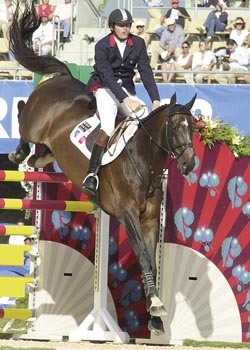
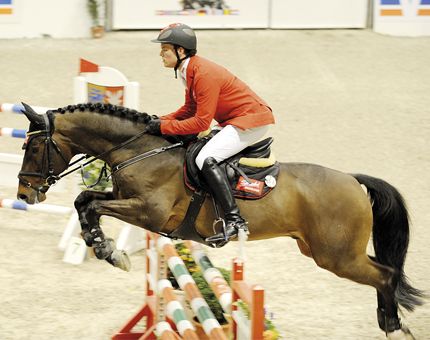
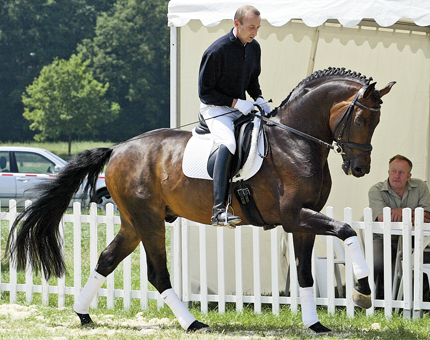
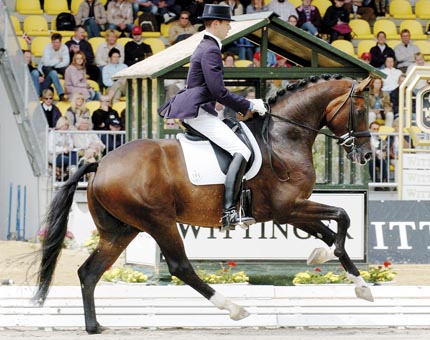
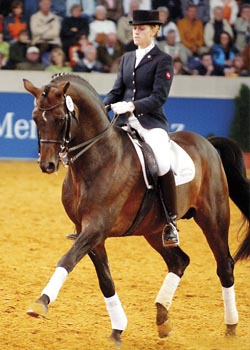
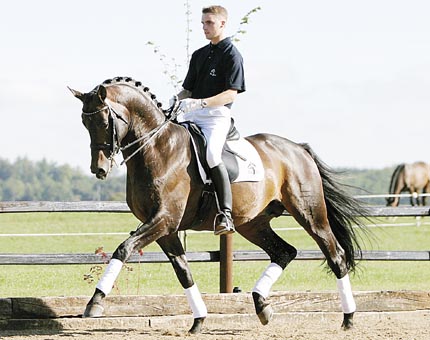
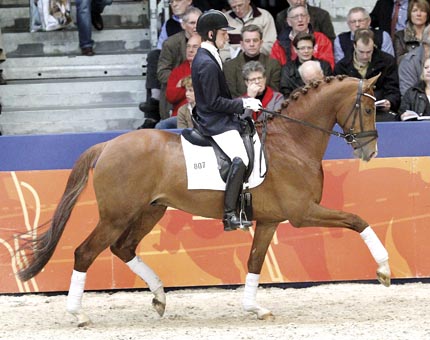
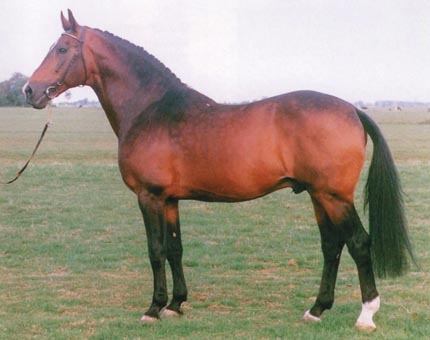
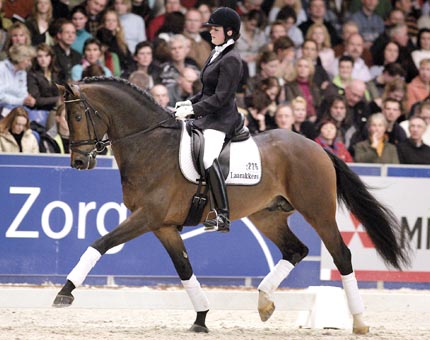
I have a goodtimes x ekstein mare (Imalve) x jasper. I am trying to decide who to breed her to and I am considering the two stallions Bustique or Baltic unless you can suggest something else. She is a lovely type mare, who has never shown but very athelic and tall. Would appreciate a fast email as I would like to breed her soon
Thanks so much
Hello there,
Thank you for all the info you have for us,I understand this takes months of hard work to gather all the information that you so kindly share with us.
Just one question,I have always suspected Diamant de Similly as a mediocre sire,great horse to look at and has all things in the right place,just does not have that super gene to carry on his legacy. If I may be so forward and give you my opinion on a stallion I think will take over from Darco,is Numero Uno,can I please have your view on this.
Regards
Andre De Jager
South Africa
One reason why horse breeding values are still not reliable is the low numbers measurements due to low numbers of progeny. EBVs for beef and dairy cattle as well as sheep are based on thousands of measurements being added to the records every year, whereas the European studbooks are adding a few hundred at most and only in the 10s and 20s for individual stallions with even less for mares. This makes substantially reduces the reliability of the BLUPs that are produced. The other issue that the performance measurements, especially for dressage are based on something that is ultimately subjective- do the judges like the horse in front of them and are they in awe of the name of the rider? No amount of genetics measurement will counter that.